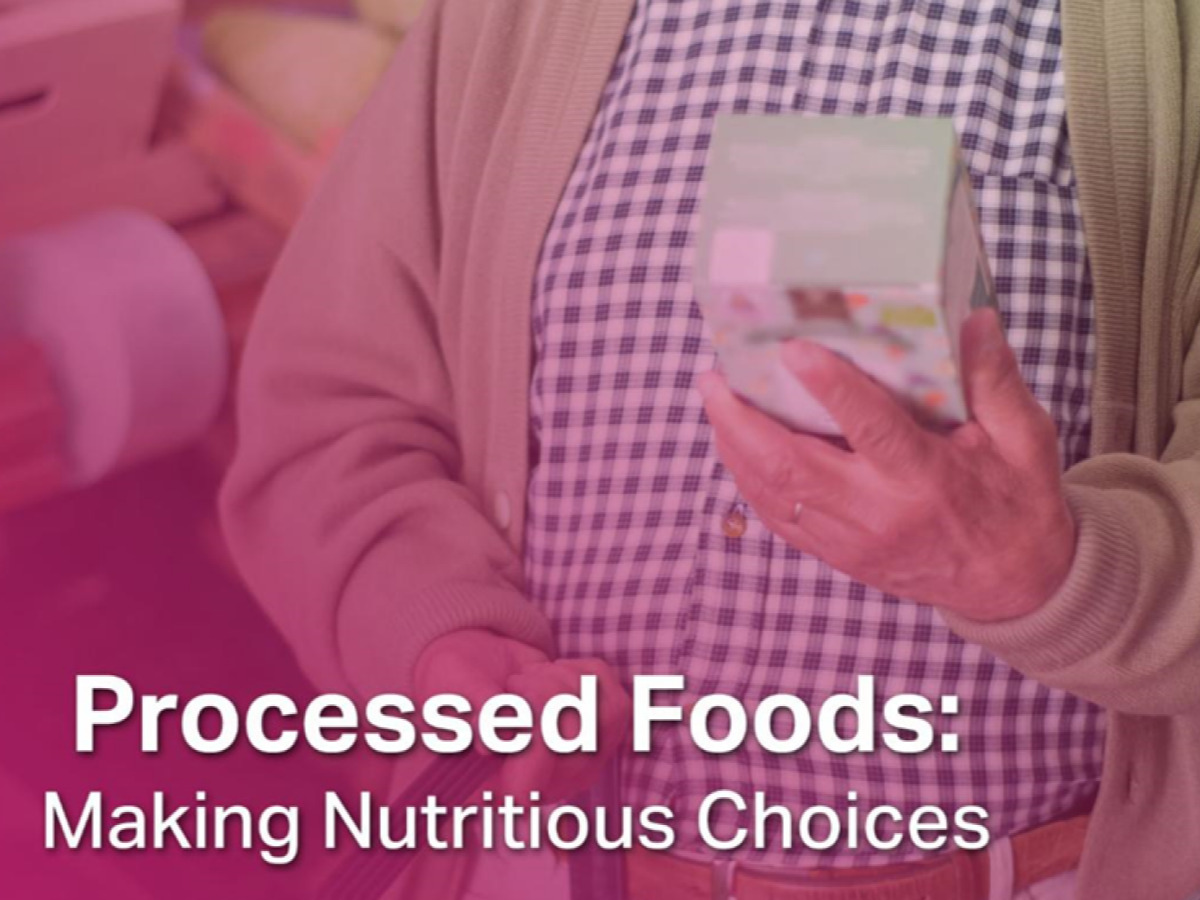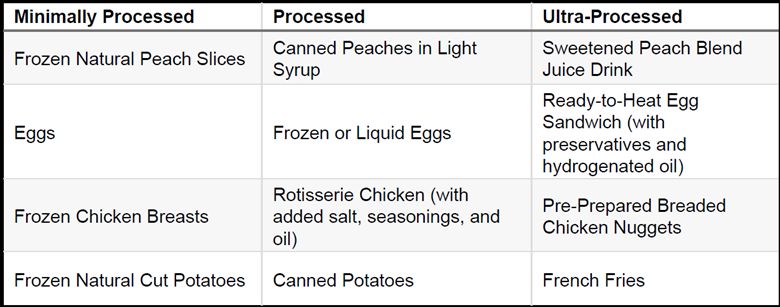Processed Foods: Making Nutritious Choices
Institute of Child Nutrition (ICN)
January 9, 2025

There is a common belief that processed foods, with their high fat, sugar, and salt content, are inherently unhealthy. Did you know some items we consider “nutritious,” like bagged spinach or prepacked apple slices, are also processed foods? Our partners at the Institute of Child Nutrition delve into the different levels of processed foods and offers guidance on making healthy choices.
What Are Processed Foods?
One way to define processed foods is any food that has changed from its natural state and has been altered in some way during preparation. Processing can include cutting, washing, milling, heating, pasteurizing, canning, cooking, freezing, drying, dehydrating, mixing, or packaging. It can also include foods with added preservatives, nutrients, flavors, salts, sugars, or fats.
Not all processed foods are created equal. Some foods need processing to make them safe, such as milk, which needs to be pasteurized to remove harmful bacteria. Other processed foods may result in higher levels of salt, sugar, and fat.
Types of Food Processing
There are different levels of processed foods, from minimally processed to ultra- or highly processed foods. Understanding the definitions and examples of each can help you choose the most nutritious options.
Minimally Processed Foods
Minimally processed foods have been slightly altered to be more convenient, sometimes safer, and more acceptable. The nutritional content of the food does not change, and no salt, sugar, oils, or fats are added. Many minimally processed foods are processed at their peak to lock in nutritional quality and freshness.
Examples: Fresh or frozen fruits, vegetables, and meats; whole grains; beans, peas, and lentils; nuts and seeds; plain yogurt or juice with no added sugar or artificial sweeteners; fresh and dried pasta; milk; and eggs
Processed Foods
The next level of processed foods includes ingredients added to enhance flavor or texture, such as sweeteners, salt, oils, colors, and preservatives. Typically consisting of 2–3 ingredients, these foods are ready-to-eat without further preparation.
Examples: Canned fruits, vegetables, beans, peas, and lentils; cheeses; unpackaged freshly made bread; canned fish; salted or sugared nuts and seeds; and salted, cured, or smoked meats
Ultra-Processed or Highly Processed Foods
Ultra-processed or highly processed foods usually contain numerous ingredients (five or more), use low-cost ingredients, and are either ready to eat or require heating. These foods are high in fat, salt, or sugar and low in fiber and nutrients. In addition to basic additives like salt, sugar, and fat, these processed foods incorporate preservatives, thickeners, hydrogenated oils, high fructose corn syrup, artificial colors, sweeteners, and flavors. These preservatives have been linked to major health concerns, such as stroke and cognitive impairment.
Examples:
- Ready-to-eat foods: sweet or savory packaged snacks, cookies, crackers, chips, sweetened breakfast cereals, cereal bars, deli meat, and mass-produced packaged breads and buns
- Ready-to-heat products: pre-made frozen meals, hot dogs, and chicken and fish sticks or nuggets
- Sugar-sweetened beverages: carbonated drinks and juice drinks with high fructose corn syrup and added coloring

Choosing Healthy Alternatives
You now understand how most foods are processed to some extent. It is important to recognize that while it is difficult to avoid all processed foods, it is also unnecessary. Instead, aim to incorporate whole or minimally processed foods into your menus, limit processed foods, and avoid ultra-processed ones. Many minimally processed options, like frozen vegetables, are nutritious, high-quality, time-saving, and convenient.
The chart below illustrates the different levels of processed foods to guide you in making the most nutritious choices.

Read your labels. The Nutrition Facts label is a great tool for determining the level of processing. If you’re unsure if a product is minimally processed, processed, or ultra-processed, look at the ingredients list. In many cases, the longer the ingredients list, the more highly processed a food is.
When unsure, opt for whole foods. Look for fresh or frozen fruits and vegetables, whole grains, lean meats, or other foods with fewer, easily recognizable ingredients.
For more information, read the Institute of Child Nutrition’s January Mealtime Memo.
